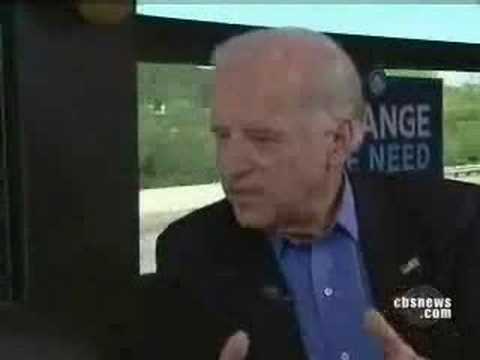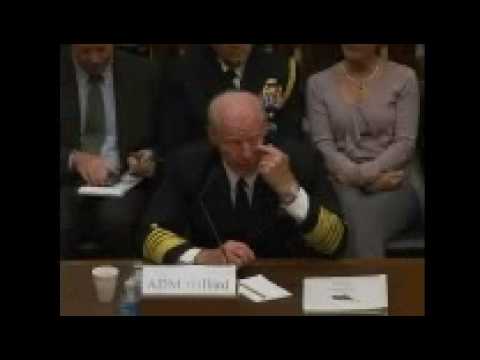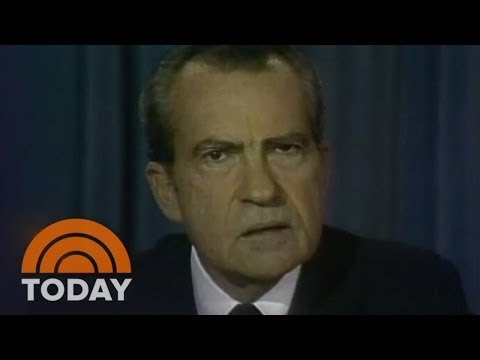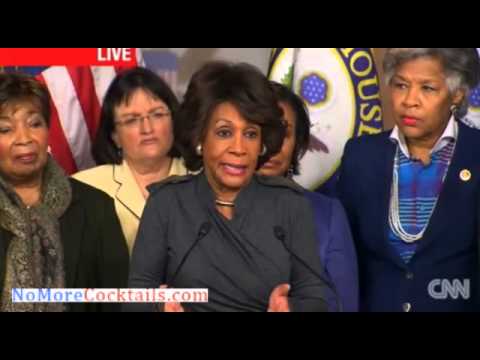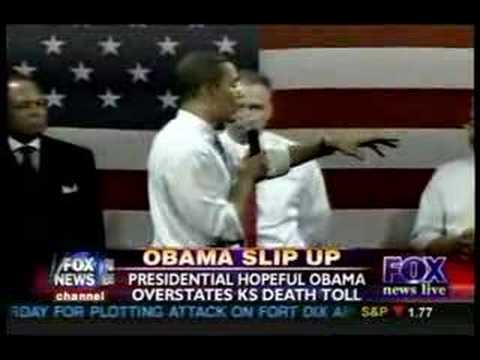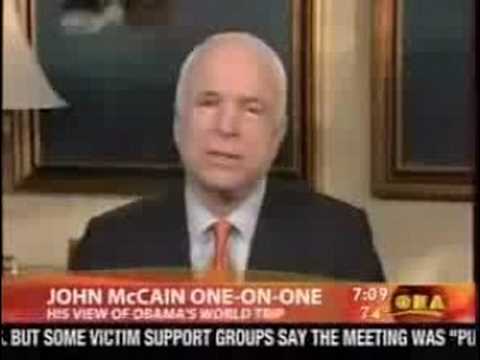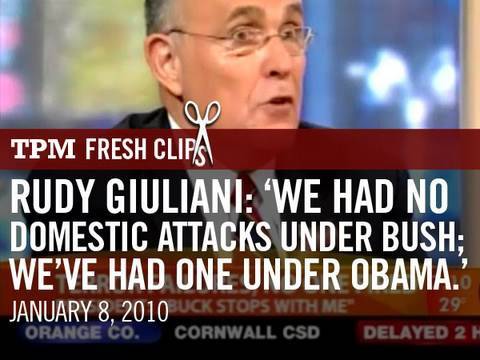10Joe Biden
September 2008 was a rough time for the US economy, providing an endless supply of talking points and ammunition for that year’s presidential campaign. In a September 22 interview on CBS Evening News, vice presidential candidate Joe Biden was discussing political leadership during harsh economic times. Referring back to the Wall Street Crash of 1929, Biden said: “When the stock market crashed, Franklin D. Roosevelt got on the television and didn’t just talk about the, you know, the princes of greed.” That’s not what happened during Black Tuesday. First off, FDR was not the president in 1929; Herbert Hoover was. Even if Hoover had decided to try to address the nation via television, very few people would have seen him. Several early forms of television did exist before 1929. Electronic television, the most direct precursor to television as most people think of it, was first successfully transmitted in 1927. However, regular television broadcasts didn’t begin until 1939. FDR was the first US president to appear on TV, at the very least.
9Ronald Reagan
In 1981, Ronald Reagan uttered a perplexing line: “Trees cause more pollution than automobiles do.” While such a statement seems obviously false, there’s actually a small bit of truth to it: Trees do emit pollutants. In fact, roughly 66 percent of the atmosphere’s volatile organic compounds (VOCs) are emitted by trees. Two types of VOCs, isoprenes and terpenes, are involved in the formation of smog. Isoprene also increases the rate at which sunlight transforms atmospheric gases into ozone. While ozone is good to have in the stratosphere, it’s less pleasant to have down here in the troposphere. It can irritate the eyes and nose and even exacerbate respiratory problems. It’s estimated that 500 British deaths during an August 2003 heat wave were attributable to ozone pollution. However, it’s a little early to start chanting, “Saw, baby, saw!” Other factors are at work. It’s been found that when man-made pollutants, such as those from cars, are removed, pollutants from trees drop by 50 percent. Specifically, only about half as many secondary organic aerosols (SOAs) form when there’s no automotive pollution for tree emissions to interact with. SOAs are integral to the formation of nitrogen oxide and particulate matter, two EPA-regulated air pollutants. On a final note, trees emit more pollutants as weather gets hotter. Hopefully, global warming isn’t real. Also, trees produce oxygen.
8Hank Johnson
On April 1, 2010, a video clip of Georgia Democratic senator Hank Johnson circulated around the Internet. In it, Johnson expressed a strange fear about Guam: “Yeah, my fear is that the whole island will become so overly populated that it will tip over and capsize.” This statement was no April Fools’ joke; Johnson actually said this at a House committee hearing back on March 25. Specifically, he speculated that the addition of 8,000 US Marines and their families would cause the small island to capsize. Guam, like an overwhelming majority of islands, is the top of a submerged mountain. It is fixed to the ocean floor and is in no danger of tipping over or capsizing. Johnson later clarified that he was trying to use a humorous metaphor to express concerns that adding thousands more people to Guam’s population will negatively affect the island’s environment. Critics, however, point out that neither his voice nor body language indicated a joke. They also note that when US Navy admiral Robert Willard, whom Johnson was questioning, reacted to the capsizing remark as though it were literal, the Congressman made no attempt to correct him.
7Richard Nixon
Richard Nixon is arguably the most infamous president in US history. One of his many questionable actions as commander in chief was the Huston Plan, which involved wiretapping antiwar groups and opening their mail, among other things. Nixon was explicitly told that these actions were illegal, but he approved the plan. J. Edgar Hoover nixed the plan five days later, but Nixon’s approval of the plan would come back to haunt him. It was listed as an example of his abuse of presidential power during later impeachment proceedings. On May 19, 1977, during a television interview, David Frost asked Nixon about his approval of the Huston Plan, and Nixon replied: ” . . . when the president does it, that means it’s not illegal.” Article II, Section 4 of the US constitution explicitly states that a president can be impeached and removed from office for various high crimes and misdemeanors. (Nixon might have heard something about that.) Also, Article I, Section 3 states that after impeachment and conviction by the Senate, a president can be “liable and subject to indictment, trial, and punishment, according to law.” A US president’s power is not meant to be unlimited.
6Maxine Waters
In early 2013, a frequently heard buzzword in US media was “sequestration.” The primary fear that this term denoted was of impending cuts to many government programs. They would take effect on March 1, unless members of Congress managed to agree on how to cut $1.5 trillion in spending over the next 10 years. The deadline had originally been January 1, but a short-term deal was passed, delaying the so-called “fiscal cliff.” Were sequestration to take effect, consequences would include military personnel not receiving pay and federal employees being laid off, among many other things. Jobs were expected to be lost, and the country’s economic growth was expected to be curtailed. A few days before the March 1 deadline, California representative Maxine Waters spoke about the consequences of sequestration: “We don’t need to be having something like sequestration that’s going to cause these jobs losses, over 170 million jobs that could be lost.” Despite the warranted fears of sequestration’s effects, there is no way that it would have caused the loss of 170 million jobs. In February 2013, only 136 million people were employed in the United States. Over 100-percent unemployment would surely have been an unprecedented disaster. Representative Waters did later correct herself, changing the figure to 750,000 jobs.
5Michele Bachmann
On April 21, 2009, a day before Earth Day, Minnesota Representative Michele Bachmann argued about the effects of carbon dioxide: “Carbon dioxide is portrayed as harmful. But there isn’t even one study that can be produced that shows that carbon dioxide is a harmful gas.” CO2 is a part of the Earth’s atmosphere, which we all breathe. Specifically, it comprises 0.035 percent of it. Much higher concentrations, all the way up to 0.5 percent, are permitted by OSHA in occupational settings. Higher concentrations can be lethal, however. CO2 will displace oxygen in the bloodstream, causing dizziness, disorientation, suffocation, and death. Five minutes of exposure to a CO2 concentration of 9 percent can kill you. Of course, Rep. Bachmann was actually referring to how CO2 affects the environment. Scientists would disagree that no study can be produced claiming that CO2 harms the environment. There is a 97-percent consensus among scientists that the Earth’s climate is changing, and human activity is responsible. (Scientists were saying that before 2009.) CO2 is a contributor to that greenhouse effect. Its concentration in the atmosphere has risen by one-third since the beginning of the Industrial Revolution.
4Barack Obama
In 2007, Barack Obama, then an Illinois senator, made an odd gaffe. During a campaign rally in Richmond, Virginia, he mentioned a recent tornado that struck Greensburg, Kansas, ultimately to make a point about how the Bush administration’s diversion of National Guard resources toward the war in Iraq has made it harder to respond to disasters: “In case you missed it this week, this week, there was a tragedy in Kansas, 10,000 people died, an entire town destroyed.” Greensburg did indeed experience an incredible disaster on May 4, 2007. A supercell in the area spawned 12 tornadoes, one of which had grown to 2.7 kilometers (1.7 mi) wide by the time it struck the town. Its winds reached 330 kilometers (200 mi) per hour, making it the first EF5 recorded in the US since meteorologists begin using the Enhanced Fujita Scale. Nearly 1,000 homes and buildings were destroyed, with hundreds more damaged. Luckily, however, only 11 people lost their lives, as opposed to 10,000. In fact, the town’s population at the time was only 1,400. Obama admitted his error, citing tiredness as the cause. His campaign staff added that he meant to say “at least 10.”
3John McCain
In summer 2008, the US presidential campaign was in full swing. In late July, Senator Obama began a weeklong trip to the Middle East, starting with Afghanistan before moving on to Iraq and Israel. One intention of the trip was to demonstrate his ability to serve on a world stage during wartime, something that his detractors had questioned. Of course, such a trip was politically risky, if Obama were to make an embarrassing mistake during its course. Reporters and press eagerly waited for a gaffe. They got their gaffe, but not from Obama. On July 29, Republican presidential candidate John McCain was speaking on Good Morning America. When asked for his assessment on the severity of the current situation in Afghanistan, McCain responded: “I think it’s serious . . . It’s a serious situation, but there’s a lot of things we need to do. We have a lot of work to do and I’m afraid it’s a very hard struggle, particularly given the situation on the Iraq-Pakistan border.” Iraq and Pakistan share no borders. A country known as Iran sits in between. Thousands of kilometers separate them. Even navigating between Iraq and Pakistan’s closest points would require a sizable trip down the coasts of the Persian Gulf and the Gulf of Oman.
2Nancy Pelosi
The political hashtags of early 2010 were all about health care laws. Democrats were trying to pass the Affordable Care Act through the Senate, and the Republicans weren’t happy. In March, Speaker of the House Nancy Pelosi remarked: “But we have to pass the [health care] bill so that you can find out what’s in it.” That’s not how bills typically work. After a politician sponsors a bill, it is evaluated by a committee. If that committee releases the bill, the House of Representatives debates and votes on it. If it gets enough votes, it moves on to the Senate. There, another committee evaluates it, and if they release it, the bill is once again debated and voted on. If the bill gets through the Senate, a joint committee of House and Senate members reconciles any differences between their respective versions of the bill. The revised bill must then be approved by both the House and the Senate. If that happens, it’s finally sent to the president to either sign or veto. Even a completely incompetent Congress with an unprecedentedly low approval rating would probably know what’s in a bill by the time it’s gone through all of that. Pelosi has defended her remark, noting that critics take it completely out of context. Opponents of the bill had been accusing it of being about death panels, killing jobs, increasing debt, and so on. The Senate had been failing to produce their version of the bill to be debated against the House’s, and no one knew what they’d end up voting on. The Affordable Care Act was ultimately signed into law by President Obama, without any Republican votes.
1Rudolph Giuliani
On January 8, 2010, Rudy Giuliani, former mayor of New York City, gave an interview on Good Morning America. Among other things, he criticized Obama’s plans to try a suspected terrorist on US soil and to close the detention center at Guantanamo Bay. He said that Obama should be doing what George W. Bush did during his presidency and gave this reason: “We had no domestic attacks under Bush. We’ve had one under Obama.” Giuliani was the mayor of New York City during the infamous 9/11 attacks in 2001, in which thousands of people died. Bush was president at this time. Giuliani later clarified that he meant there were no domestic attacks since 9/11. However, the anthrax scare, the “shoe bomber” incident, and the Beltway sniper attacks, among others, fit within the FBI’s definitions for terrorism, as well. Ironically, Giuliani touted the leadership that he displayed after 9/11 as a strength during his presidential campaign. Anthony is an editor at Listverse. He normally wouldn’t touch politics with a 3-meter (10 ft) pole.
